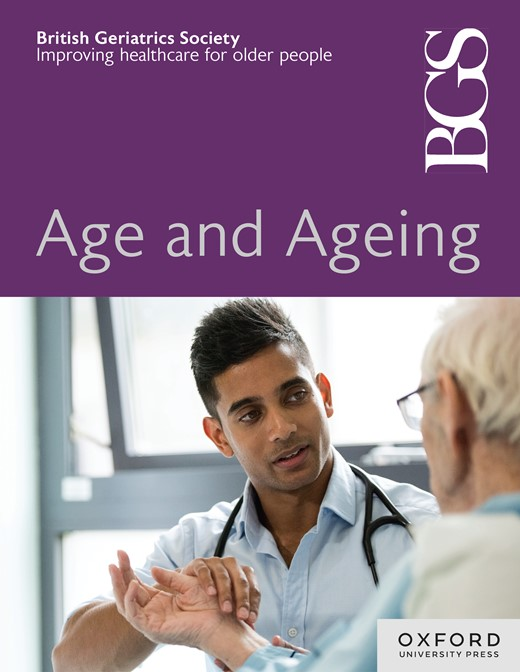Improving Advanced Care Planning: Documentation of DNA CPR Orders and TEPs in Residential Care Admissions
IF 6
2区 医学
Q1 GERIATRICS & GERONTOLOGY
引用次数: 0
Abstract
Background Do Not Attempt Cardiopulmonary Resuscitation (DNA CPR) orders and Treatment Escalation Plans (TEPs) are key components of advanced care planning for managing patients with progressive life-limiting illnesses and significant frailty. Our study aimed to determine the proportion of such patients being transferred from residential care facilities with documented TEPs upon medical admission, examine whether these TEPs were revised during the hospital stay, and assess patient outcomes at 14 days post-presentation. Methods We reviewed the lists of patients who had been referred for medical admission via the emergency department over a one-month period and identified those presenting from residential care facilities. We excluded those under the age of 65. We reviewed relevant medical notes and collected anonymised data into an Excel spreadsheet on a password protected computer. Results We identified 34 patient’s relevant patients. Notes were available for review in 31 cases (17 male; age range 66 to 96 years old, mean age 82.3). Of the 31 cases reviewed, the mean Clinical Frailty Score was 7.4. Residential care facilities sent documentation outlining TEPs in 19/31 cases. In those cases, 4/19 specified full resuscitation. In 3/4 of these cases, the TEP was revised during their admission. In one case, documentation specified that the patient did not want to be transferred to hospital under any circumstances. A total of 14 patients had no documentation regarding TEP. Of those, 7/14 went on to have DNA CPR orders filled out during their admission. At 14 days post presentation, 7 had died in hospital, 16 were discharged back to their residential care facility, and the remainder remained inpatient. Conclusion These findings underscore the need for better advance care planning, potentially improving patient management and reducing the emotional burden on patients, healthcare providers and families during critical moments.改进预先护理计划:住院护理中 DNA CPR 命令和 TEP 的记录
背景 不要尝试心肺复苏(DNA CPR)指令和治疗升级计划(TEP)是管理进展性局限生命疾病和严重虚弱患者的高级护理计划的关键组成部分。我们的研究旨在确定从住院护理机构转来的此类患者中在入院时有治疗升级计划记录的比例,检查这些治疗升级计划是否在住院期间进行了修订,并评估患者入院后 14 天的治疗效果。方法 我们查阅了一个月内经急诊科转诊入院的患者名单,并确定了从安老院转来的患者。我们排除了 65 岁以下的患者。我们查阅了相关医疗记录,并在一台受密码保护的电脑上将匿名数据收集到 Excel 电子表格中。结果 我们确定了 34 名相关患者。有 31 个病例(17 名男性;年龄在 66 岁至 96 岁之间,平均年龄为 82.3 岁)的病历可供查阅。在审查的 31 个病例中,平均临床虚弱评分为 7.4。在 19/31 个病例中,寄宿护理机构发送了概述 "技术性治疗方案 "的文件。在这些病例中,4/19 的病例规定了全面复苏。其中 3/4 的病例在入院时修改了 TEP。有 1 例患者在文件中明确表示在任何情况下都不希望转院。共有 14 名患者没有 TEP 相关文件。其中,7/14 的患者在入院时填写了 DNA CPR 命令。入院 14 天后,7 名患者在医院死亡,16 名患者出院返回其居住的护理机构,其余患者仍在住院治疗。结论 这些研究结果表明,有必要制定更好的预先护理计划,从而改善患者管理,并在关键时刻减轻患者、医疗服务提供者和家属的精神负担。
本文章由计算机程序翻译,如有差异,请以英文原文为准。
求助全文
约1分钟内获得全文
求助全文
来源期刊

Age and ageing
医学-老年医学
CiteScore
9.20
自引率
6.00%
发文量
796
审稿时长
4-8 weeks
期刊介绍:
Age and Ageing is an international journal publishing refereed original articles and commissioned reviews on geriatric medicine and gerontology. Its range includes research on ageing and clinical, epidemiological, and psychological aspects of later life.
 求助内容:
求助内容: 应助结果提醒方式:
应助结果提醒方式:


